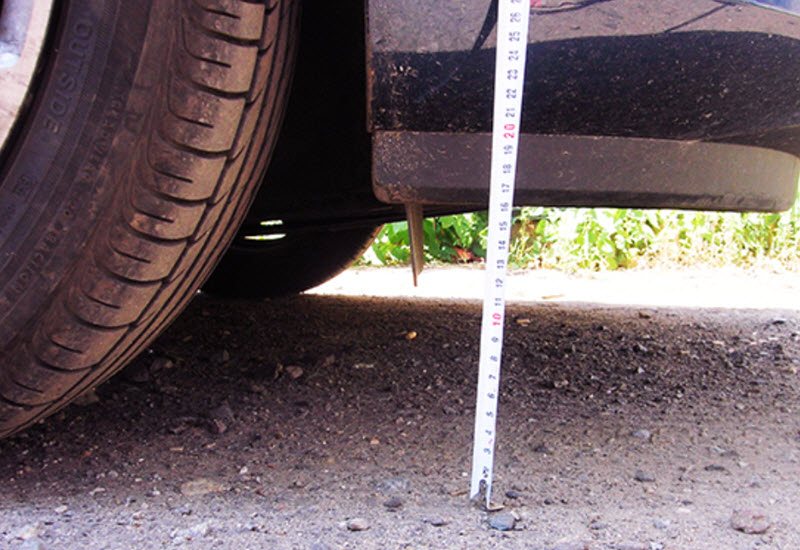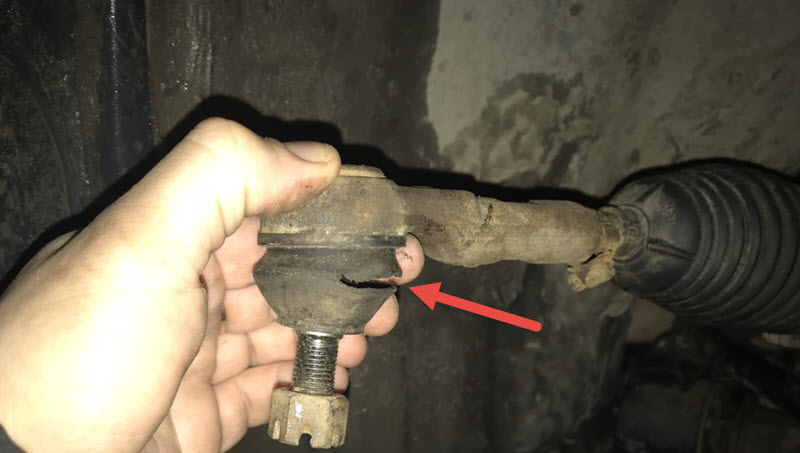
Faulty steering tips: symptoms and replacement
Content
Sooner or later, annoying and frightening knocks begin to appear in the front suspension of a passenger car, sometimes associated with steering turns. Often the cause is tie rod ends. They do not have record-breaking long service lives, so it is important to diagnose the defect in time and change the tips.

Steering, like brakes, does not tolerate malfunctioning driving.
Purpose of steering tips and rods
The ball ends are used to connect the tie rod to the swivel arm of the strut or knuckle, depending on the type of vehicle suspension.
They have rigidity and lack of clearance when working in a given direction, while allowing the rod to move freely relative to the lever along the angle in various planes.
This is ensured by a tight fit of the ball pin in the hinge body with its compression by a powerful spring through plastic or metal liners with lubrication.
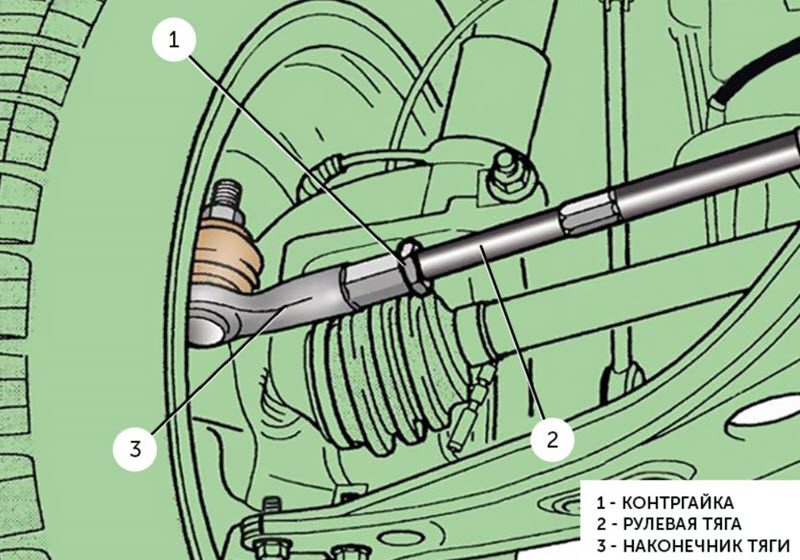
Steering rack device
The vast majority of passenger cars use a rack and pinion type steering mechanism. Structurally, it consists of:
- mechanism body;
- racks with gear knurling on one side;
- a drive gear mounted on the end of the steering input shaft;
- a stop that presses the rack against the gear to eliminate the gap between the teeth;
- stop springs;
- bushings in the body along which the rail slides;
- rolling bearings, the input shaft with the gear rotates in them;
- oil seals and anthers sealing the body;
- power steering, if provided.
The body of the mechanism is fixed on the engine shield in its lower part or on the subframe of the front suspension. The rack shaft is connected to the steering column on splines or a flat made on a cylindrical surface.
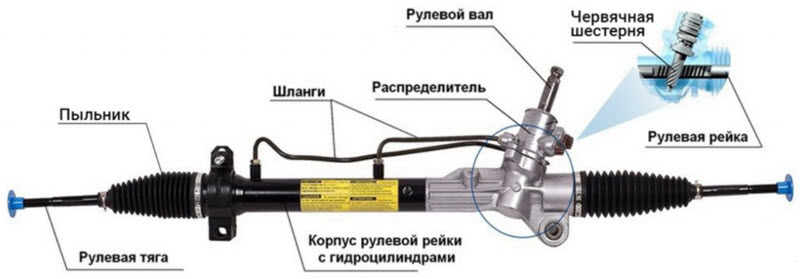
The driver turns the steering wheel, transmitting torque through the column to the input shaft. The engagement of the pinion and rack converts the rotational motion of the shafts into a translational rack. Tie rods are attached to the ends or the middle of the rail using rubber-metal or ball joints, one on each side.
The most commonly used end rods with ball joints (apples). They are sealed with cylindrical bellows that keep the hinges lubricated and protect against dirt.

The second ends of the rod are connected to the steering tips with the help of threaded couplings that regulate the toe-in of the wheels.
On the one hand, the fingers of the tips have a ball rotating in the body through the liners, and on the other hand, a conical or cylindrical surface for fastening with lugs of the rotary levers. The levers directly act on the steering knuckles or struts, which cause the planes of rotation of the wheels to deviate.
Symptoms of Hinge Problems
The hinges of the steering tips and rods are protected by rubber covers. The main cause of premature failure of ball joints is cracks and ruptures of these rubber covers (anthers).
Water and dirt get into the joints, causing corrosion and abrasion of the material of the fingers and liners. The hinges begin to wedge, the articulation geometry changes, and play appears.
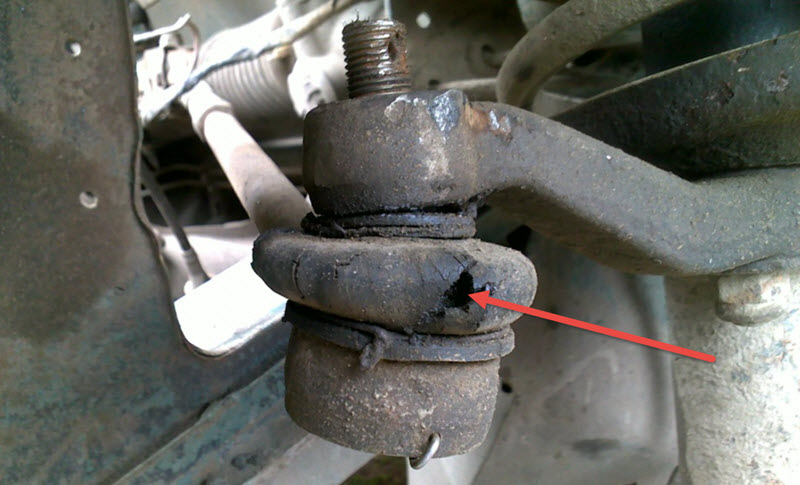

The resulting gaps manifest themselves as knocks in the suspension. From the driver's seat it is difficult to distinguish these sounds from the wear and tear of other joints in the suspension. Therefore, any appearance of a knock requires immediate diagnosis.
You should not hope that with a knock you can still ride for a while. If some other sources can be ignored without any special consequences, for example, the wear of the stabilizer struts does not threaten the car with anything, except for discomfort when driving, then the play in the steering tips and rods is extremely dangerous.
The finger can jump out of the housing, which will lead to an immediate wheel spin, the car will completely lose control and, at best, go off the road, at worst, there is a danger of a severe accident with oncoming traffic. Suspension diagnostics are a must.


Watch this video on YouTube
Knocking can also be emitted by worn tie rod joints. The nature of the sound is somewhat different, it depends more on the movements of the steering wheel than on the work of the suspension. But even with the vertical movement of the tips, tensile and compressive forces are transmitted to the rods, so the knock will still be present. Accurate information will give only careful diagnosis.
How to check the serviceability of the steering tip
The play of the steering tip is checked quite simply. With strong wear, the finger moves freely in the body in the longitudinal direction from the force of the hand.
If such a diagnosis is difficult, you can put your hand on the hinge, asking the assistant to shake the steering wheel to the sides. The selection of the gap will be immediately felt by hand. Both tips, left and right, are checked in this way.


Watch this video on YouTube
The second sign of the need for replacement will be a violation of the tightness of the rubber covers. They should not have any traces of grease that has come out, which is clearly visible on the usually dusty outer surface of the corrugated rubber. It is all the more unacceptable if the gaps and cracks are well distinguished visually.
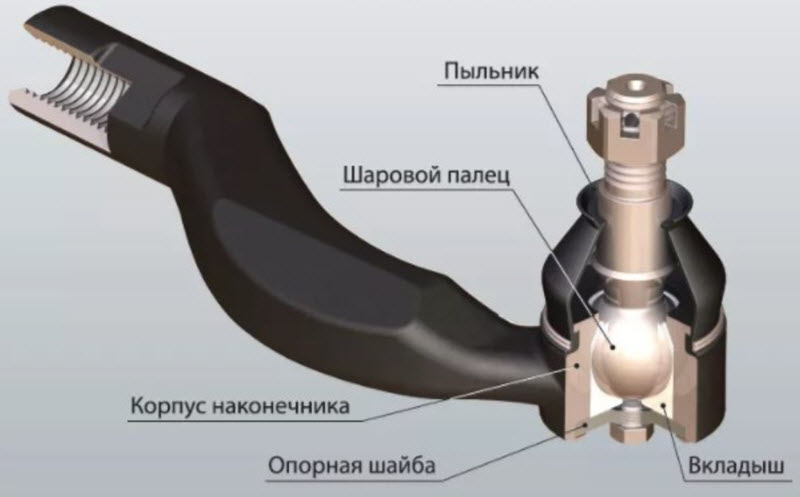

You can not be limited to replacing rubber boots, even if this part is supplied as a spare part. It is practically impossible to track the moment of the beginning of the gap, for sure, dust and water have already penetrated inside the hinge. It is impossible to remove it from there, the hinge will wear out intensively even if you replace the anther and add lubricant.
Collapsible hinges, where it was possible to wash, change grease, liners and fingers have long been in the past. A modern steering tip is a non-separable, disposable item and cannot be repaired. It is inexpensive, and changes without much difficulty.
Self-replacement of the steering tip on the example of the Audi A6 C5
The operation is quite simple, difficulties can arise only in the presence of soured threads or other connections. The work can be done without a pit or lift:
- the machine is lifted with a jack, after which it is installed on a reliable stand; work on a jack is strictly not allowed;
- before lifting, the wheel fasteners are loosened, after hanging the wheel is finally removed;
- the threaded connections of the rod with the tip and the tip to the swing arm are abundantly wetted with a penetrating compound such as a “liquid key” or a similar universal liquid lubricant, one of the WD40 analogues;
- the thread of the coupling and the fastening of the tip to the fist eye are loosened;
- using a suitable puller or sharp hammer blows in the lateral direction, the finger is removed from the eye;
- the tip is unscrewed from the thrust adjusting sleeve;
- the new part is mounted in the reverse order, it is better to lubricate all adjacent surfaces with a special copper-containing lubricant in an aerosol package, this will prevent further acidification;
- before work, it is desirable to measure the length of the rod or apply marks in order to approximately maintain the toe value, but this does not eliminate the mandatory adjustment on the stand after work is completed.


Watch this video on YouTube
It will not be possible to accurately maintain the angle of convergence of the wheels after replacing the tips, no matter how carefully the measurements are made. Therefore, a visit to the toe and camber adjustment stand is mandatory, but in any case, this must be done regularly, so the tires will be saved from premature wear and the car's handling.

